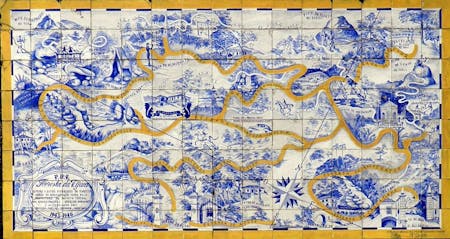TIJUCA spirits pay tribute to the eponymous forest, the green lung of Rio de Janeiro.
The Tijuca forest almost disappeared; miraculously saved, her story deserves to be told.
By the will of His Majesty Pedro II
On December 18, 1861, in the heat of the southern summer, Major Manoel Gomes Archer, accompanied by slaves Constantino, Eleuterio, Leopoldo, Manuel, Maria and Mateus, began to climb the hills surrounding Rio de Janeiro.
Its mission, which has just been entrusted to it by decree of Emperor Dom Pedro II, consists of replanting trees on these slopes in order to restore the Tijuca forest as it once existed.
Indeed, for several years Rio de Janeiro has had no water, its Carioca, Maracanã and Comprido rivers no longer descend the hills that overlook it, offering it dazzling viewpoints, and the fountains no longer flow in the squares. from the city.
The Major and his troop
The fault lies with the coffee plantations, the sawmills and the exploitation of charcoal which led to the clearing of the forest on a large part of the Tijuca hills, located around the city and an integral part of the Mata Atlântica, tropical rainforest common along the coast of Brazil.
Soon joined by 22 employees, the small troop of Major Archer will go for thirteen years and not without the opposition of the landowners who had deforested the places, tirelessly replanting trees until reconstituting the original forest.
100,000 trees
100,000 saplings of many species will be planted from nearby farms in Paineiras and Jacarepaguá or from the virgin forests of the Guaratiba region near the west coast of the city. They required a very complex method of reforestation, thus adding to the value of the work carried out by this small group of determined men and these trees still symbolize to this day the great diversity of endemic species in the Mata Atlântica.
A Frenchman at work
Thereafter, Major Archer will be called to Petrópolis, summer residence of the emperor, where he will continue his ecological work because the "imperial city" is struck by the same evils as Rio de Janeiro.
Baron Gaston Louis Henri de Robert d'Escragnolle, son of French nobles, took over until his death in 1886, transforming the forest into this magnificent park that is the pride of Rio de Janeiro today.
First ecological gesture in history
Thanks to these men, Rio de Janeiro regains its water supply and the Tijuca forest becomes the first example in the world of the successful reconstitution of an ecosystem, symbolizing an early awareness of ecological issues.
Having become an integral part of the Tijuca National Park, the Tijuca Forest, an essential green mass for the climate and hydrological control of the city of Rio de Janeiro, is now protected and constitutes the largest urban forest in the world.

Pay homage and perpetuate the work
Raised near Rio de Janeiro, in the lands of Mata Atlântica, our spirits pay homage to the biological diversity of the Tijuca Forest and the ecological awareness of these pioneers.
Wanting to be a link between the past and the future, they are intended to encourage future generations to perpetuate the work of Pedro II and Major Archer in order to continue to benefit from the Tijuca forest.
Because environmental and sustainable development issues are even more present today, TIJUCA stands alongside and financially helps those who work to protect the Mata Atlântica.